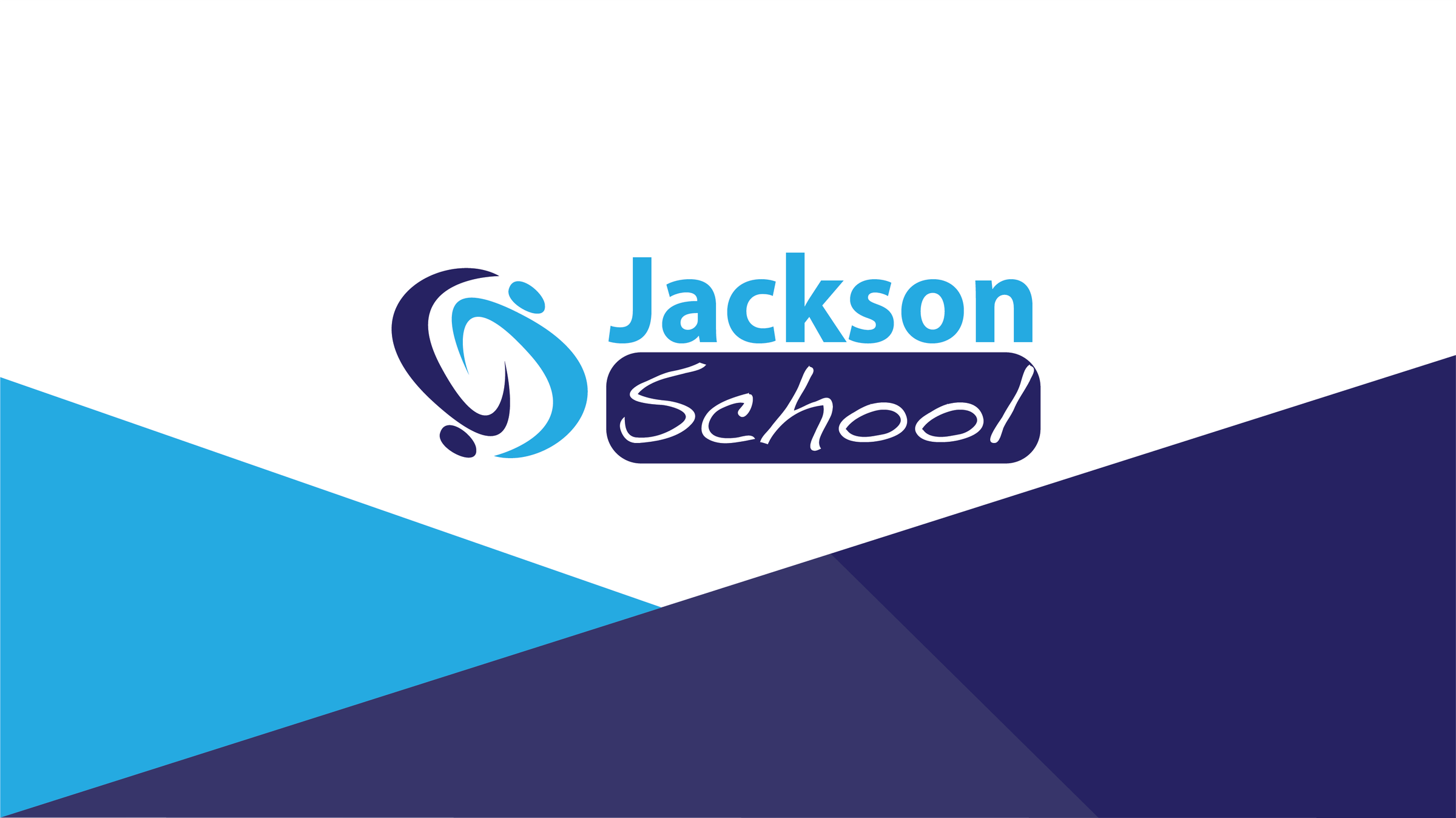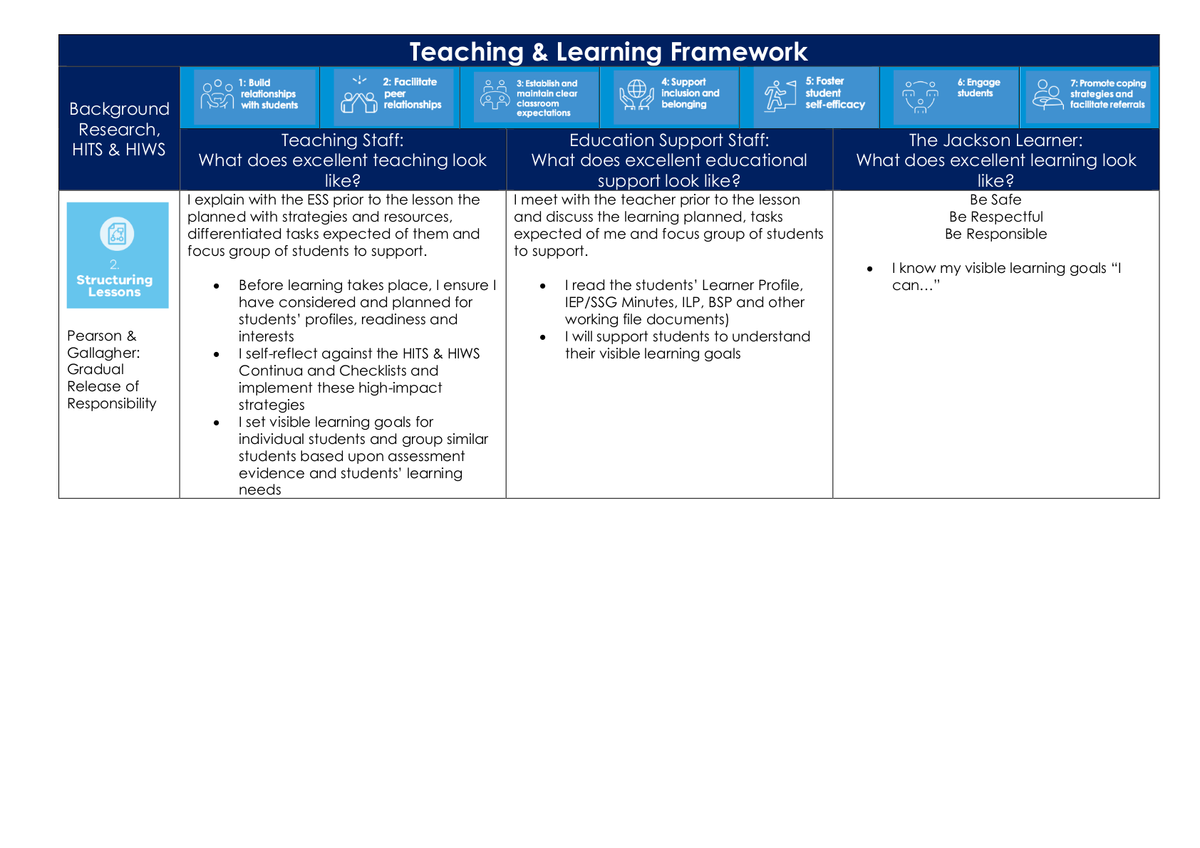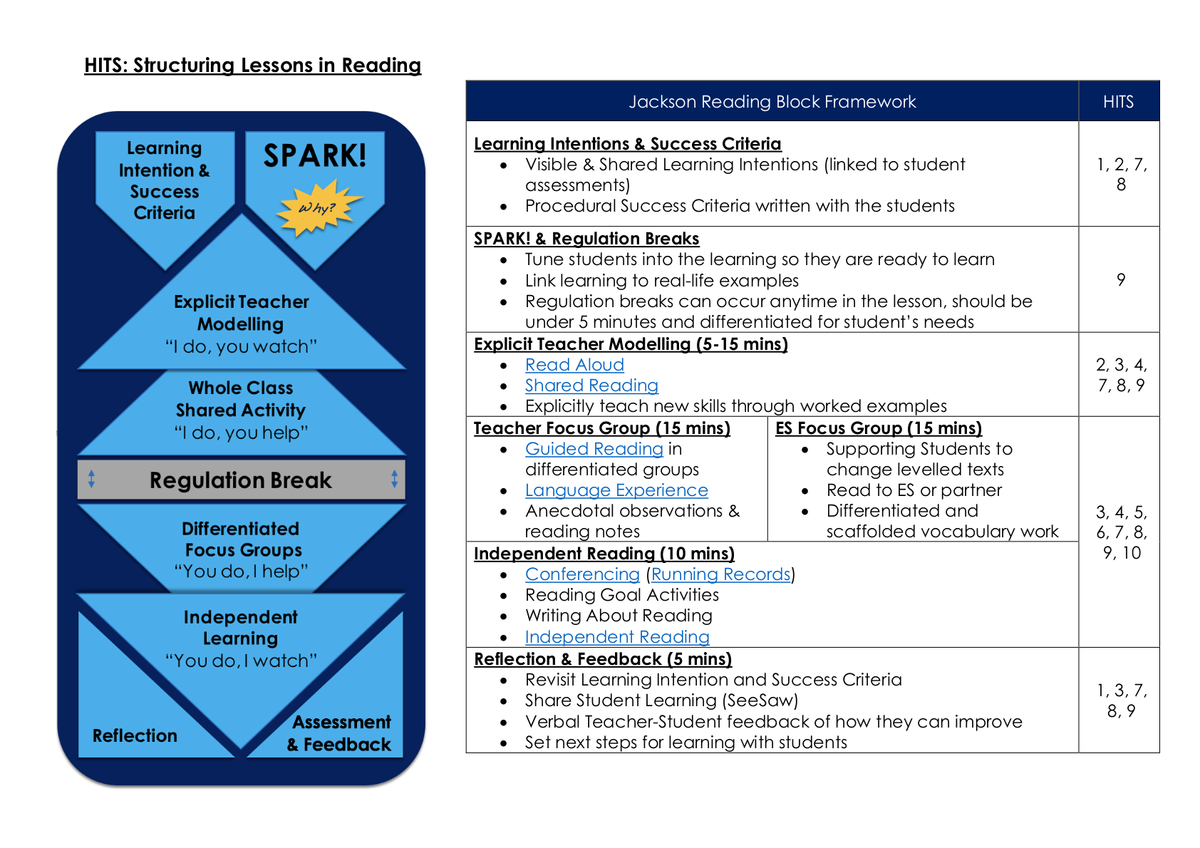Pedagogy, Teaching & Learning
Model & Framework

Pedagogy, Teaching & Learning
Model & Framework


We have used the Marzano (2011) High Reliability Schools framework to prioritise the Victorian Curriculum (Intended Curriculum) using a backwards-by-design model from the VPC outcomes. The Jackson Essentials Curriculum (Implemented Curriculum) provides a scope and sequence of what strands and modes of Literacy and Numeracy are to be taught by each age phase. Strategies and resources are aligned to this scope and sequence to create a guaranteed and viable curriculum. From the Jackson Essentials Curriculum every student is set ILP goals based upon the content descriptions for Literacy (Reading & Viewing, Writing, Speaking & Listening); Numeracy (Number, Algebra, Measurement, Geometry/Space, Statistics & Probability) and Independent Learning (Personal and Social Capability). As a requirement of Disability Inclusion Reform (previously PSD) students are required to have an Individual Education Plan (Attained Curriculum) which is comprised of a Learner Profile, Individual Learning Plan and Career Action Plan. ILP goals are set and reported against each semester, including all specialist subjects and Independent Learning (General Capabilities). To meet the needs of our students we provide a modified curriculum through quality, precision teaching and personalised learning. Based on the Tomlinson (2001) model, learning is differentiated through: 1) content, 2) process, 3) product, 4) environment considering a learner’s profile, readiness and interests. Our teaching and learning includes a balance of learning styles.
All lessons should display and share the Learning Intentions and Success Criteria. As a school we follow Pearson & Gallagher’s (1983) Gradual Release of Responsibility.
This starts with a SPARK! as a mini lesson to hook the students in the learning and explain the purpose and relevance to the real-world application. Teachers also use the SPARK! as a self-regulation check-in for all students before learning commences.
The Gradual Release of Responsibility begins with Explicit Teacher Modelling as a whole class pitched to our Jackson School Benchmarks and differentiated for our breadth of learners. This should be differentiated for students’ learning needs and supported by our Educational Support Staff.
This may then develop into a Whole Class Share Activity where students participate and share in the teacher modelling. We acknowledge that students with an intellectual disability (ID) have a much shorter attention span than their mainstream peers, therefore whole class activity should be limited to a maximum of 10 minutes.
Following whole class modelling and activities students may need a Regulation Break as a re-engagement activity. All curriculum planning, teaching and learning should be in line with our differentiation and intervention model based upon ‘Response to Intervention’ (RTI). All students should be in differentiated learning groups based upon their ability, activity, outcome or level of support (Teacher or ESS).
The Differentiated Focus Group is a supported activity where both the Teacher and the Educational Support Staff guide the learning activities of the students within that group at the students’ level.
Following this, or as a third rotational group, students will engage in an Independent Learning activity where they will apply their new knowledge with minimal support. We aspire for all of our students to become independent life-long learners.
At the end of the lesson there should be time allocated as a whole class or group for Reflection where students reflect upon and self- or peer-assess their learning. This provides an opportunity for Assessment for Learning (Formative Assessment) where teachers assess student progress against the learning intention and success criteria and provide quality and timely Feedback to students upon their learning using SeeSaw (online digital learning portfolio). All differentiated learning activities and formative assessment strategies should directly link to the learning intention for all students.
Click the arrow to the right to view our Teaching and Learning Framework which embeds the High Impact Teaching Stategies (HITS) and High Impact Wellbeing Strategies (HIWS). The Teaching and Learning Framework also provides a detailed model of what teachers, education support staff and students should do at each stage of the process section of the tTeaching and Learning Model.










Planning Guide
The Planning Guide provides further detail of how our curriculum planning aligns with our Teaching and Learning model.

